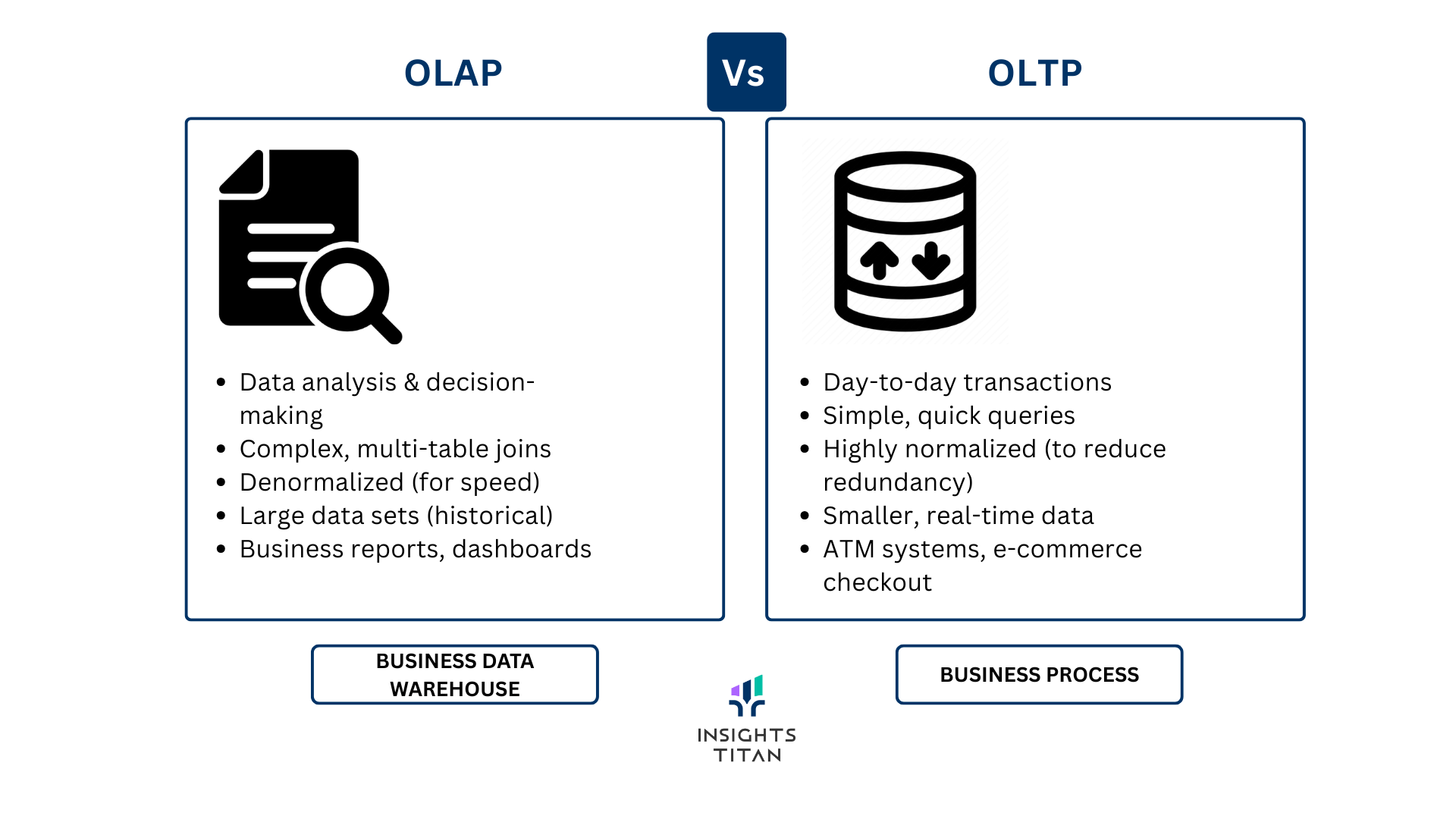You’re about to design your data ecosystem and wondering what works best for your use case, OLTP or OLAP? Understanding your options and alternatives is crucial for success, and that’s exactly what I’ll cover in this post.
In data processing, Online Transaction Processing (OLTP) and Online Analytical Processing (OLAP) represent two fundamental approaches that serve distinct purposes. While both handle data, they’re optimized for entirely different use cases. Understanding these differences is essential for designing efficient data systems that align with your specific business requirements.
Data drives every business decision in today’s competitive landscape. Whether you’re running a small e-commerce site or managing enterprise operations, your ability to process and analyze information effectively determines your success. While this data typically resides in relational databases or centralized data stores, its true value emerges through proper analysis and processing.
This is where the choice between OLTP and OLAP becomes critical. OLTP systems excel at processing real-time transactions, ensuring your day-to-day operations run smoothly. OLAP systems, on the other hand, transform that transactional data into valuable insights through complex queries and analysis.
Let’s explore each approach, starting with Online Transaction Processing (OLTP), then diving into Online Analytical Processing (OLAP).
What is OLTP?
OLTP systems are designed to manage our day-to-day transactional data operations. They are optimized to allow thousands of users to perform transactions at the same time while following ACID properties (Atomicity, Consistency, Isolation, Durability).
Real-world examples include a banking system that processes ATM withdrawals, deposits, and fund transfers in real-time. Or an e-commerce platform managing order placements and payments. Retail Point of Sale (POS) systems updating inventory instantly. Hotel reservation systems handling bookings.
At this point, you understand the multiple processes required when choosing OLTP. It’s largely based on volumes of transactions and focuses on speed and efficiency.
What is OLAP?
OLAP systems are designed to perform complex queries on large datasets for reporting and business insights. They focus on working with historical data to provide insights that drive strategic decision-making.
Some examples of OLAP use cases are marketing analytics examining customer behavior over time for strategic planning. Financial reporting that looks at performance across different business areas. Supply chain analysis for demand forecasting.
Key Differences Between OLTP and OLAP
Data Types
OLTP manages real-time transactional tasks, maintains current data, and supports the immediate operational needs of businesses.
OLAP systems serve analytical needs by processing historical data to generate insights and support strategic planning.
Query
OLTP runs short and simple queries such as inserting, selecting, updating, or deleting records. These happen very frequently.
OLAP performs less frequent but complex queries to find insights through data analysis, such as aggregations, joins, and calculations over large datasets.
System Design and Performance
OLTP systems focus on minimal response times, high concurrency, and real-time data integrity. They are designed for many simultaneous users and fast transaction processing.
OLAP systems process data in batches rather than real-time. They emphasize computational power to handle large-scale analytical queries.
Data Architecture
OLTP databases use normalized relational models focusing on efficient transaction processing.
OLAP databases use multidimensional data models and denormalized schemas to make fast data retrieval and analysis easier.
Data Volume and Storage
OLTP systems deal with large numbers of small, short transactions.
OLAP systems store massive datasets, often ranging from terabytes (TB) to petabytes (PB).
When to Use OLTP and OLAP
Use OLTP when:
- You need fast, reliable processing of lots of small transactions
- The system supports high concurrency with strict data integrity
- Your requirements involve operational tasks like payment processing, order entry, and inventory management
Use OLAP when:
- You want to analyze large volumes of historical data to generate insights
- You need complex queries involving aggregations, trend analysis, and forecasting
- You want to support strategic decision-making and business intelligence reporting
OLTP vs OLAP
| OLTP | OLAP | |
|---|---|---|
| Purpose | Processes large volumes of real-time transactions | Analyzes consolidated business data |
| Focus | Transaction processing | Data analysis |
| Data Type | Large number of short transactions | Large volumes of historical data |
| Processing Time | Fast (milliseconds) | Slower (seconds to hours) |
| Query | Insert, update, delete operations | Complex analytical queries |
| Data Structure | Normalized tables | Denormalized tables |
| Backup | Needs constant backup | Can be backed up less often |
| Users | Supports many users at once | Supports fewer concurrent users |
| Process | Handles daily operations quickly | Processes analytical queries efficiently |
Choose the Right System for Your Business
Understanding OLTP and OLAP systems is crucial for choosing the right data solution for any business. Both systems are valuable for data processing. OLTP helps process day-to-day transactions, while OLAP helps analyze this data for business insights.
Depending on your usage and requirements, you might benefit from OLTP, OLAP, or both systems working together.
Many companies use both. OLTP systems handle daily operations, while OLAP systems take that data and turn it into useful business insights through analysis and reporting.
The key is to determine your business requirements and choose the right data solution to empower your business decisions.



